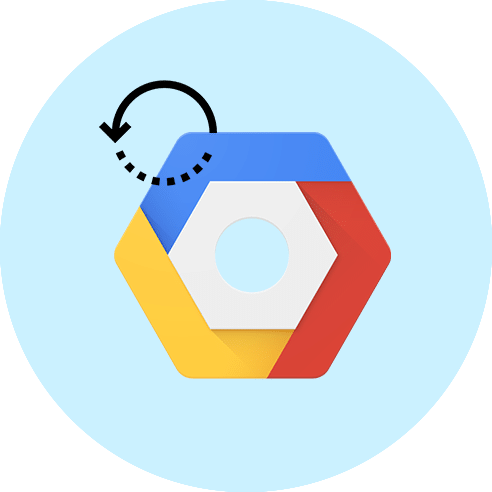Google Cloud Disaster Recovery
Google Cloud Platform (GCP) Disaster Recovery Services
Enterprise-Grade Cloud Backup and DR With Google Cloud Platform
More and more organizations are migrating their infrastructure to the Google Cloud Platform (GCP), considering the security, flexibility, and cost-effectiveness. GCP ensures a high level of redundancy and provides granular control over the physical and virtual servers, and ensures a faster, stable, secure, and isolated environment.
Why Google Cloud Platform?
GCP scores over traditional disaster recovery methods by addressing the complicated planning requirements of physical and network infrastructure, scalability, security, bandwidth, and other parameters.
Applications and data on GCP utilize the same security model deployed in all Google Apps and are highly secure and reliable. Additionally, simplified administration through GCP reduces costs in managing complex applications.
GCP is considered environmental-friendly for various reasons, majorly because GCP data centers typically consume only half the energy of the standard data centers.

Benefits of Hosting DR Solutions in GCP
Disaster recovery using Google Cloud Platform (GCP) offers numerous benefits:
High Availability and Reliability
GCP functions through a worldwide network of data centers, guaranteeing robust availability and dependability. Your data and applications are distributed across multiple regions, minimizing the risk of downtime due to localized disasters.
Scalability
GCP allows you to scale your disaster recovery resources up or down as needed. You can easily adjust capacity to meet changing demands, ensuring cost efficiency.
Data Redundancy
GCP offers robust data redundancy options. Information is automatically duplicated across numerous data centers within a single region, and you can extend data replication to alternate regions or continents, enhancing overall resilience.
Security
GCP provides vital security measures, including encryption, identity and access management, and network security. Your data and applications are protected from threats and unauthorized access.
Fast Recovery
GCP offers quick recovery times thanks to automated failover processes and the ability to run applications in multiple zones or regions. This minimizes downtime and ensures business continuity.
GCP Disaster Recovery Approach
Disaster recovery in Google Cloud Platform (GCP) involves creating a comprehensive strategy to protect your critical data, applications, and infrastructure from unexpected events. Here’s a high-level overview of the critical components of a disaster recovery approach for GCP:
Business Impact Analysis (BIA)
Conduct a BIA to identify critical systems and applications. Determine their Recovery Time Objectives (RTOs) and Recovery Point Objectives (RPOs). This analysis will guide your disaster recovery planning.
Data Backup and Replication
Use GCP’s native services like Cloud Storage and SQL for automated backups and data replication. Create regular snapshots of your virtual machines (VMs) using Compute Engine Snapshots for data consistency.
Multi-Region Deployment
Deploy critical applications and data across multiple GCP regions to ensure redundancy and high availability. GCP’s global network allows for low-latency replication and failover.
Disaster Recovery Site
Establish a secondary disaster recovery site in a different geographic region. This site should be ready to take over operations if the primary site experiences a disaster.